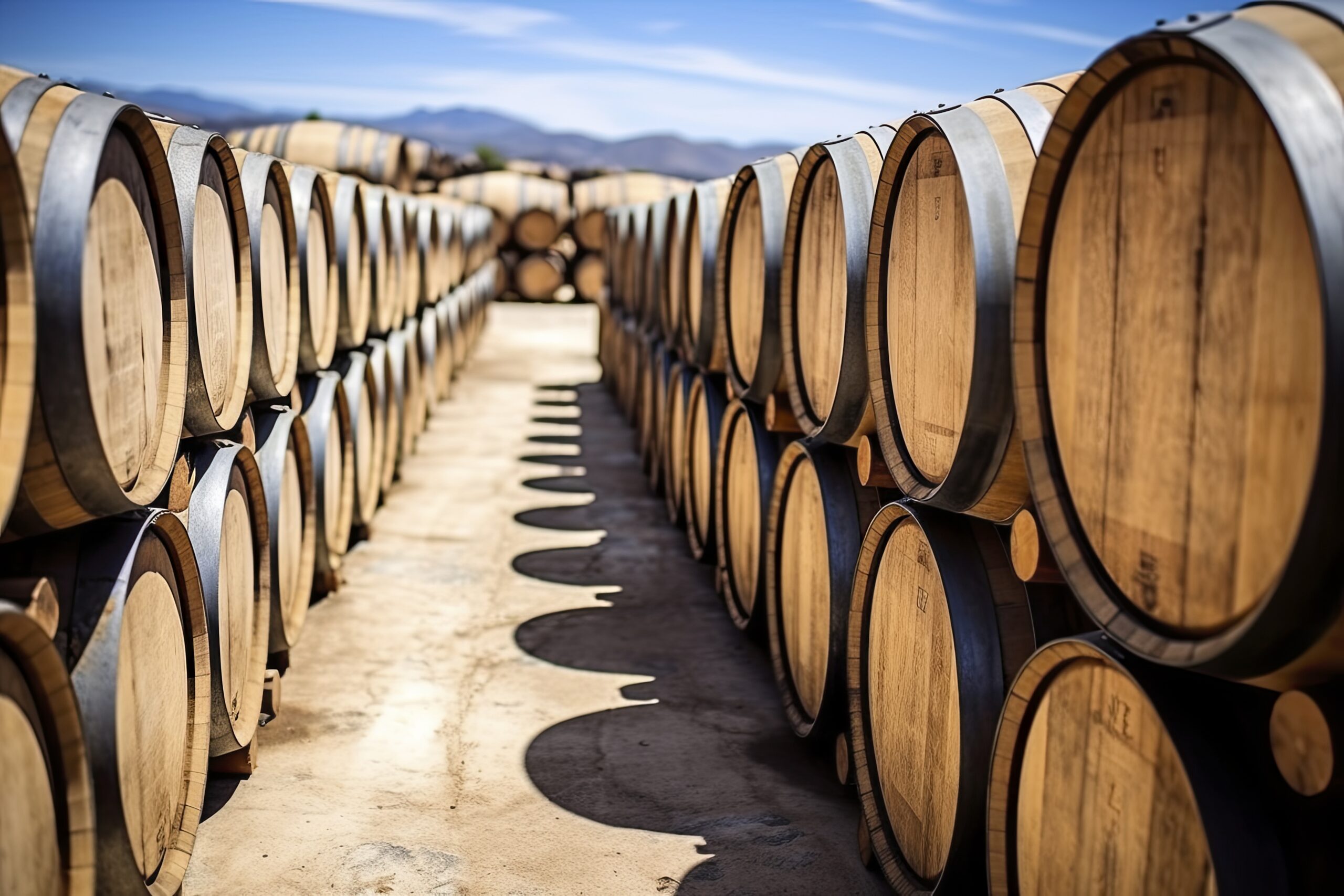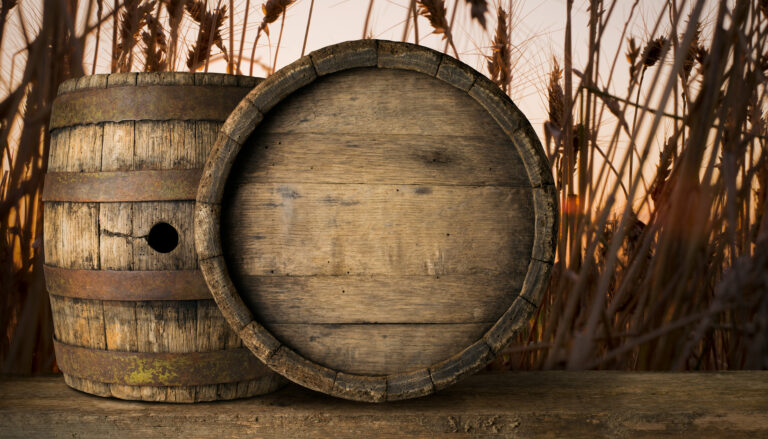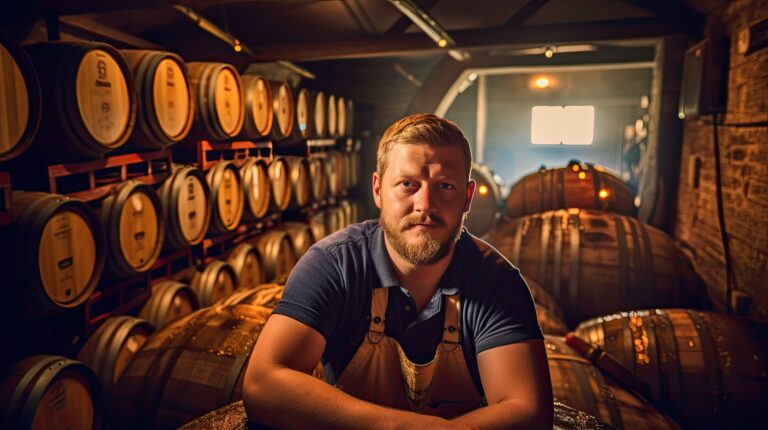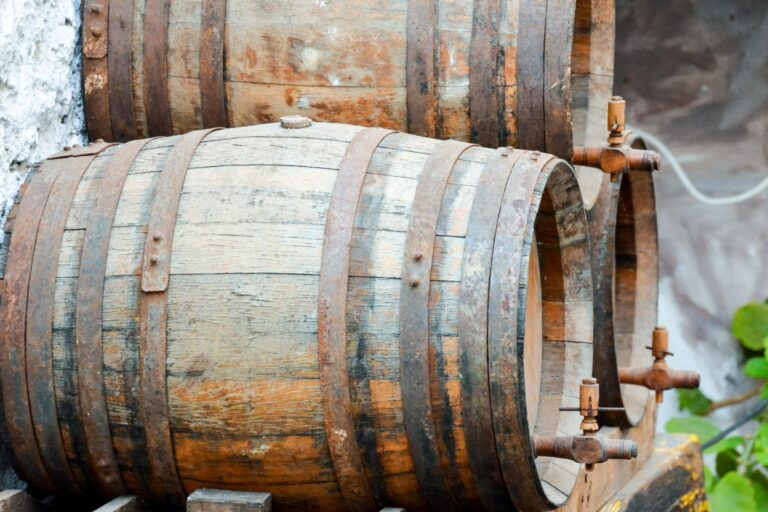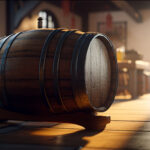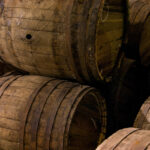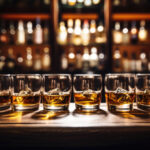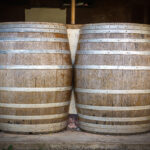You might have wondered if extreme heat or cold can speed up the barrel aging process for spirits like whiskey or brandy. We all know the traditional aging process in charred oak barrels can take years to develop those complex flavors and aromas that come from the spirit interacting with the wood. But what if you could nudge that process along a bit? What interesting flavors might pop up under more extreme temperature conditions?
Introducing the Barrel Aging Experiment
Barrel aging alcohol—whiskey, wine, brandy—it’s a real art. The barrel itself and the aging environment have a huge impact on the final flavor. We wanted to see exactly how temperature and humidity play a role, so we decided to run an experiment.
We started with 12 barrels of a neutral spirit, filling and sealing them all at the same time to keep things consistent. Then, we stored them in three very different environments: a cool cellar (55°F), a hot attic (95°F), and a climate-controlled room (72°F, 60% humidity).
After just six months, we tasted samples from each barrel, and the differences were pretty amazing. The cool cellar barrel produced lighter, fruitier flavors with some floral notes. The hot attic barrel? A much darker, oakier spirit with strong caramel and spice. The climate-controlled barrel was somewhere in the middle, with balanced oak, vanilla, and stone fruit flavors.
Humidity was a factor, too. The attic barrels dried out a bit, and the spirit picked up flavors of dried fruit like raisins and prunes. The cellar barrels, with higher humidity, had fresher fruit flavors. The controlled room, aiming for ideal humidity, produced a well-rounded flavor.
We kept tasting samples every 3-6 months, and over two years, the differences just became more and more pronounced. This experiment really showed us how much the environment impacts aging and flavor. Temperature and humidity are absolutely crucial for developing a perfect barrel-aged spirit. Careful control of these conditions lets distillers really tailor a spirit’s flavor to their exact specifications. It’s where science and art come together in the magic of barrel aging.
Choosing the Right Wood for Your Barrels
When you’re barrel aging, the type of wood you choose is super important. Oak is the most popular, and for good reason.
- American White Oak: This oak has a tight grain and is less porous, which means less oxygen exposure. This leads to slower aging and less evaporation, giving spirits like whiskey and brandy richer, sweeter flavors of vanilla, caramel, and toasted nuts.
- French Oak: French oak has a looser, more porous grain, allowing for more oxidation and evaporation. This means faster aging and more robust flavors of spice, clove, and cinnamon, especially in bold red wines like Cabernet Sauvignon. French oak barrels are usually more expensive, but a lot of distillers and winemakers think they’re worth it for the added complexity.
- Other Wood Types: Some distillers are starting to experiment with other woods like hickory, cherry, and maple. These can create some really interesting and unique flavor profiles. But you have to be careful – the tightness of the grain and the toxicity levels need to be considered before aging anything in them. Some woods just aren’t suitable or even safe.
When you’re pushing the limits of barrel aging, the type of wood and how it’s treated is critical. Wood contributes most of the flavor to spirits and wine during long aging periods. Choosing a wood that can handle extreme conditions without cracking or making the product bitter is key. With the right wood and treatment, barrel aging under extreme heat, cold, humidity, or time can create some incredibly complex results. But it takes patience, experimentation, and a willingness to accept some failures along the way. The reward? Discovering a whole new dimension of flavor complexity.
Building Barrels for Extreme Aging
Barrels used for aging spirits in extreme conditions need some special attention. Regular charred oak barrels just won’t cut it when you’re dealing with freezing temperatures, intense heat, or high humidity. You need barrels designed specifically for these kinds of environments.
- Choosing the Wood: For extreme heat or cold, skip the oak – it’s more prone to cracking. Look for dense, resinous woods with tightly packed grains, like maple, hickory, or chestnut. These woods handle temperature swings much better and help insulate the spirit. Plus, they add some nice flavors, like maple syrup, nuts, and spice.
- Reinforcing the Barrel: Standard barrel staves and hoops won’t hold up in extreme conditions. You’ll need thicker staves, stronger hoops (think stainless steel instead of wood), and more hoops overall to prevent leaks and cracks. Extra pitch or sealant around the barrel head and between the staves helps, too.
- Controlling Oxygen Exposure: In really humid environments, too much oxygen can lead to excess evaporation and some unwanted oxidation flavors. For aging in high humidity, use a barrel with a tighter char and maybe even add an extra layer of pitch to limit oxygen exposure. The opposite is true for dry, hot conditions, where you need more oxygen to develop those complex flavors. Loosen the char and use a more porous wood.
Extreme Aging Locations
Some distilleries are already aging spirits in some pretty extreme places, and they’re seeing great results:
- A Scottish distillery ages whisky in an old meat locker, so it’s constantly exposed to freezing temperatures.
- A Texas distillery ages bourbon in a hot warehouse that can reach up to 140°F in the summer – talk about speeding up maturation!
- A Caribbean rum distillery ages its spirit in a beachfront warehouse—hot, humid, and salty sea air all around.
- An Australian distillery ages brandy in a metal-clad barrel in the hot outback, then finishes it in a cold climate.
With the right wood, construction, and oxygen control, barrel aging in extreme conditions can create some exciting flavors you just can’t get in a standard warehouse. The possibilities are endless! What kind of extreme aging environment can you dream up?
Choosing the Right Spirits for Your Experiment
Picking the right spirits for your barrel aging experiment is key. You want something that will take on interesting flavors from the wood but still keep its core character. Here are some good options:
- Bourbon: Bourbon’s sweet, caramel-vanilla profile goes perfectly with oak. As it ages, it picks up notes of spice, candied fruit, and smoke. Bourbon barrels are also widely used, so you’ll be following a classic technique.
- Rum: Dark rum really transforms in a barrel. It loses those harsh, chemical edges and gains molasses, coffee, and dried fruit notes. For lighter rum, oak aging adds a bit of color and balances the sweetness with hints of coconut, almond, and spice.
- Brandy: Brandy’s concentrated fruit essence benefits from the mellowing effects of oak. Peach, cherry, and apricot brandies become more complex, with butterscotch, nut, and baking spice accents. Applejack and other fruit brandies get smoother and richer.
- Tequila: Tequila, especially reposado and añejo, takes on oak flavors really well. You’ll get honey, vanilla, and cinnamon spice notes, and the barrel aging helps soften that peppery finish.
Using smaller barrels (5 to 15 gallons) will speed up the aging process because of the increased wood-to-spirit ratio. More surface area means the oak compounds diffuse into the spirit more quickly. Just be sure to sample regularly to avoid over-oaking, which can make things bitter.
With the right spirits and a good nose, your barrel aging experiment is sure to be interesting. Keep a journal to track how the aroma, color, and flavor change over time. Comparing your observations to standard aged versions of the same spirits will show you how wood type, barrel size, and aging time affect the final product. Most importantly, have fun and enjoy learning about the art and science of barrel aging!
Extreme Heat, Cold, and Pressure
Some barrel aging experiments have involved exposing barrels to extreme conditions to see what happens. Scientists have looked at high heat, freezing cold, and increased pressure.
- High Heat: Heating barrels speeds up the chemical reactions inside the wood, like the breakdown of lignin and cellulose. This can make the flavor and aroma compounds stronger. Some distilleries use special “heat cycled” warehouses that get over 100°F for part of the day. The result? A more robust, oaky flavor in less time.
- Freezing Cold: Freezing barrels slows down chemical reactions and stops microorganisms from growing. Some distilleries in cold climates age barrels outside during the winter. The freezing temperatures are thought to preserve those delicate flavor compounds that might otherwise break down, leading to a lighter, fruitier flavor.
- Increased Pressure: Aging barrels under pressure forces more spirit deeper into the wood. Some experiments use special chambers that maintain higher air pressure. This results in a stronger oak flavor in less time. But you have to be careful – too much pressure can lead to bitterness.
These extreme aging techniques are still mostly experimental, but they show promise for speeding up aging and creating unique flavors. Moderation is key, though. Pushing barrels too far can lead to unwanted flavors and quality problems. But when used carefully with traditional aging, these techniques could open up some exciting new possibilities.
Monitoring the Aging Process
Once your barrels are aging away, you’ll want to keep an eye on them. Check in every few months to make sure everything is going smoothly.
As the spirit ages, you’ll notice the color changing from light amber to a deep, rich mahogany. That’s the spirit extracting compounds like vanillin from the charred oak, giving it that characteristic caramel hue. You might even see tiny bubbles forming – totally normal, it just means active aging. If you see excessive foaming, though, that could be a sign of temperature changes or even infection, so it’s worth checking with an expert.
You should also keep track of how much spirit is left in each barrel. A little bit (around 2% per year) will evaporate – that’s the famous “angel’s share.” It’s normal, but if it seems like it’s evaporating too quickly, you might have a leak. It’s a good idea to top off any barrels that are more than a quart low.
Every few months, do a taste test. Carefully pull a small sample from the bunghole using a wine thief and have someone who knows what they’re doing analyze it. They can check if it’s developing properly in terms of aroma, flavor, color, and mouthfeel. Take notes on how it’s progressing and if any barrels seem off.
Spirits can age for years, even decades, so this long-term monitoring is essential. Be patient and let the spirit mature at its own pace. If you’ve done everything right, you’ll be rewarded with a perfectly aged, complex spirit. Keep watching those barrels, and before you know it, you’ll have your very own custom brew to bottle and enjoy!
Chemical Analysis of Aged Spirits
Chemical analysis is key to understanding how aging changes the flavor and aroma of your spirits. As a spirit ages, it absorbs compounds from the wood, changing its chemical makeup and how it tastes and smells.
- Collecting Samples: Take samples before the spirit goes into the barrel, at different points during aging, and once it’s bottled. Keep detailed records of the barrel: type, size, char level, and age. All of these things will affect how the spirit matures.
- Measuring Alcohol and Acids: Use instruments like a density meter to figure out the alcohol percentage. Titration can measure organic acids (acetic, succinic, lactic) which give a tangy, vinegar-like flavor. These acids usually decrease as the spirit ages, making it smoother.
- Analyzing Esters: Esters are what give you those fruity aromas. They’re measured using gas chromatography. Ethyl acetate gives you pear or banana notes, while isoamyl acetate smells like banana. Esters tend to increase in the first few years of aging and then decrease over time.
- Tracking Phenols: Phenols (vanillin, syringaldehyde, coniferaldehyde) are responsible for vanilla, smoke, and spice aromas. Their levels go up over time as they’re absorbed from the charred barrel. You can use high-performance liquid chromatography (HPLC) to measure these compounds.
- Monitoring Furans: Furans (like 5-methyl furfural) produce sweet, caramel-like aromas. They’re created when wood sugars break down during charring and aging. Furans increase for the first 3-5 years and then level off. GC-MS or HPLC can measure them.
By tracking how these chemical compounds change, you’ll learn a lot about how different aging conditions (barrel type, climate, time) affect the final flavor. This knowledge can help you make better aged spirits in the future.
Sensory Changes from Extreme Aging
After all that aging, it’s time to see how those extreme conditions affected your brew. The most important things to look at are appearance, aroma, flavor, and mouthfeel.
- Appearance: How does it look now compared to before? Extreme heat might darken the color, while cold can make it clearer. Check for sediment at the bottom of the barrel – it can affect the flavor. Pour samples carefully so you don’t disturb any sediment.
- Aroma: Swirl the glass to release those aromas and take several short sniffs. Notice the primary, secondary, and tertiary aromas. Heat pulls more aroma compounds from the wood and grain, making them stronger. Cold can suppress the aromatics, but it might also produce more delicate, complex scents.
- Flavor: Take a small sip and really think about the flavors. Look for wood flavors (vanilla, coconut), grain flavors (toffee, molasses), and any off-flavors. How do the flavors change as the liquid warms up in your mouth? Extreme heat brings out toasted, caramelized flavors, while cold makes things taste cleaner and brighter.
- Mouthfeel: How does it feel in your mouth? Heat makes the mouthfeel thinner and reduces carbonation, while cold thickens it and keeps the fizz. Tannins (which make your mouth feel dry) depend on the type of wood.
By carefully evaluating these sensory characteristics, you can see if the extreme aging conditions were a good idea. Maybe more moderate temperatures would be better for your recipe and wood type. The only way to know is to keep experimenting!
Key Takeaways on Extreme Barrel Aging
Barrel aging in extreme heat or cold can give you some really interesting results. Here are the key things to remember:
- Temperature is huge: Warmer temperatures speed up the chemical reactions in the barrel, making aging faster. Colder temperatures slow things down.
- Barrel type matters: Oak barrels give you the most interaction between the spirit and the wood. They provide flavors like vanillin and give the spirit a golden color. Other woods won’t do the same thing.
- Char/toast level: A heavier char means more oak flavors, while a lighter toast gives you subtler notes. The char level needs to match the temperature. A heavy char might be too much in high heat, while a light toast might not be enough in cold aging.
- Humidity is important: Drier conditions mean more alcohol and water evaporate, concentrating the flavors. Higher humidity means less evaporation. The ideal humidity depends on the temperature.
- Time is the final piece: How long the barrel ages determines how much flavor the wood gives to the spirit. Shorter aging might need higher heat or smaller barrels. Longer cold aging might need more time to get the same results as traditional aging.
Aging in extreme heat or cold can create some intense flavors. But getting the right balance of temperature, barrel type, char level, humidity, and time is tricky. You need a scientific approach, careful monitoring, and a willingness to experiment.
Final Thoughts
Now you know the science behind how extreme barrel aging affects flavor. This experiment showed how delicate the aging process is. Even small changes in temperature and humidity can make a big difference in the taste. For distillers, keeping things consistent is a real art. For the rest of us, we can appreciate the care that goes into making complex spirits. So next time you sip an aged spirit, raise your glass to the scientists and distillers who made it possible!
